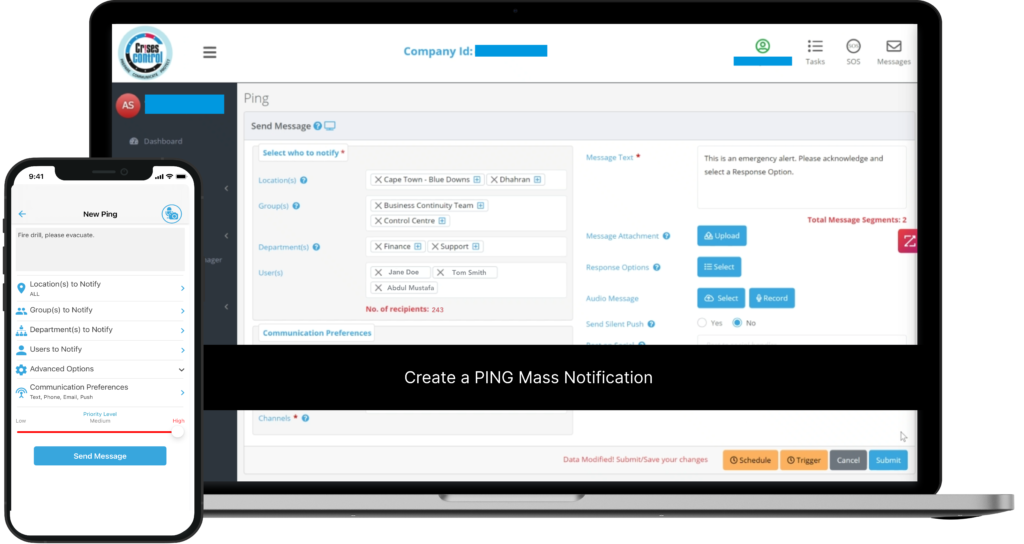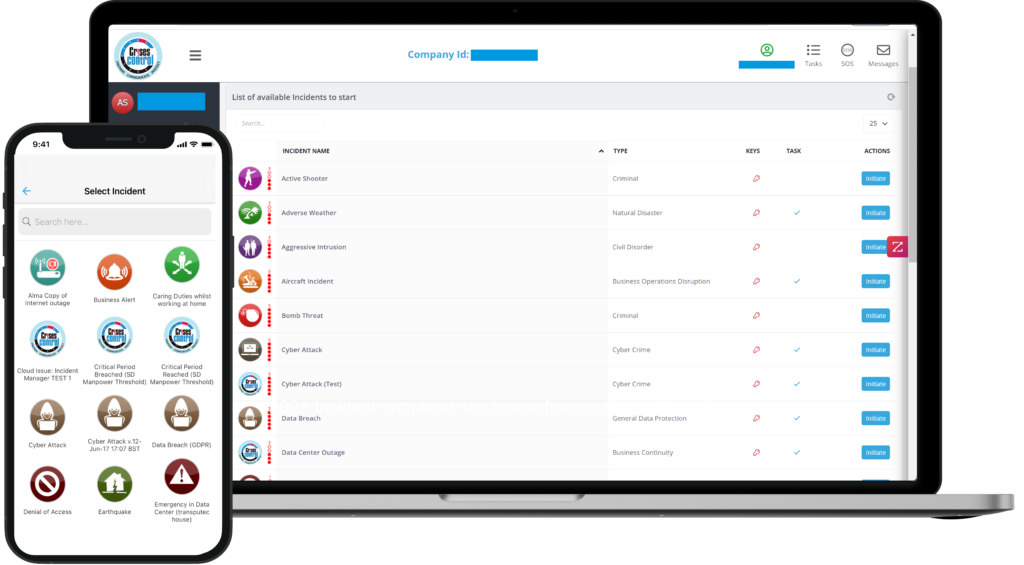Written by Anneri Fourie | Marketing Executive
In today’s interconnected world, businesses are more global than ever, operating across multiple locations and time zones. While globalisation opens doors to new markets and opportunities, it also introduces complexities—especially when it comes to crisis management. One of the biggest challenges for multinational companies is ensuring fast, clear, and accurate communication in a crisis, across a diverse workforce that speaks different languages.
In critical situations, a misunderstanding caused by language barriers can slow down response times and escalate the situation further. That’s why Crisis Communication Software with multilingual support is more than just a convenience—it’s a necessity. By bridging language gaps, it enables real-time, precise communication, which is essential for safeguarding business continuity across borders.
The Importance of Crisis Communication in Global Business Continuity
Effective communication is the backbone of any successful crisis management strategy. In an emergency, businesses need to get the right information to the right people as quickly as possible. Whether it’s directing employees to safety, managing a supply chain disruption, or coordinating responses across regions, communication plays a vital role in minimising damage and protecting people and assets.
But what happens when half your workforce doesn’t fully understand the crisis alerts? Imagine sending out a critical evacuation message in English to a team where half the members speak only Spanish or Arabic. Even a slight delay in understanding the instructions can lead to catastrophic consequences.
This is where Crisis Communication Software with multilingual support shines. It ensures that alerts, updates, and instructions are immediately available in employees’ native languages. This prevents confusion, speeds up response times, and helps keep everyone safe, regardless of their language.
How Multilingual Crisis Communication Software Works
A multilingual crisis communication system allows companies to seamlessly connect teams that speak different languages. Here’s how this type of software works to ensure business continuity, even in the most challenging situations:
1. Real-Time Translation of Alerts and Notifications
When a crisis strikes, time is everything. A multilingual crisis communication platform instantly translates emergency alerts and messages into each recipient’s preferred language. For example, Crises Control supports English, Arabic, Spanish, French, Italian, Polish, and Turkish, ensuring that global organisations can send out critical information in the languages their teams understand best.
Real-time translation eliminates the need for manual intervention, which not only saves valuable time, but also reduces the risk of human error during the translation process.
2. Localisation for Cultural and Contextual Accuracy
Translation alone isn’t enough. The words used in crisis communication must be contextually accurate. For example, a term used in one culture might have a completely different meaning in another. Multilingual software goes beyond basic translation by providing language localisation—ensuring that messages are both linguistically and culturally accurate, so nothing gets lost in translation.
This level of detail helps avoid any potential miscommunication that could occur due to cultural differences. Employees receive crisis alerts that not only make sense in their language, but also in their context, improving response times and reducing misunderstandings.
3. Personalisation Based on Employee Preferences
Every second counts in a crisis. A well-designed system allows employees to pre-select their preferred language within the platform. This way, any alert or instruction is delivered to them in their native language, automatically. By personalising communication to meet the language needs of each user, organisations can ensure everyone receives critical information quickly and clearly.
4. Cross-Regional Collaboration in Real-Time
Multilingual software also supports collaboration among crisis management teams spread across different regions. Whether it’s organising an evacuation, coordinating a response to a natural disaster, or managing a public relations issue, these platforms allow decision-makers from various regions to work together without worrying about language barriers. Everyone stays on the same page, reducing the chances of missteps or confusion.
The Key Benefits of Multilingual Crisis Communication Software
The advantages of using Crisis Communication Software with multilingual support go far beyond just translation. Here are the key ways in which it enhances global business continuity:
1. Faster Response Times
When employees receive and understand alerts instantly, they can respond faster. This rapid communication ensures that action is taken when it matters most, potentially reducing the impact of the crisis.
2. Improved Employee Safety
For companies operating in regions where multiple languages are spoken, safety becomes a pressing issue. Sending crisis alerts in employees’ native languages ensures that safety instructions are followed accurately and quickly. Whether it’s an evacuation order, safety precaution, or security threat, a clear understanding of the message is crucial in protecting employees.
3. Enhanced Cross-Border Collaboration
During a crisis, global teams need to work together seamlessly. Multilingual crisis communication software makes it possible for decision-makers in different parts of the world to collaborate efficiently. By providing real-time translation and localisation, it eliminates the confusion that might arise when different regions are coordinating efforts.
4. Consistent Customer Communication
Customers are also affected by crises, whether it’s a service outage, product recall, or supply chain disruption. Multilingual communication ensures that global customers are kept informed during these situations. When customers receive timely updates in their own language, it builds trust and reinforces your commitment to their needs during challenging times.
Interested in our Ping Mass Notification Software?
Efficiently alert everyone in seconds at scale with our Mass Notification System – PING, get the message out fast and ensure rapid response and recovery.

How Crises Control Supports Multilingual Crisis Communication
Crises Control, a leading provider of Crisis Communication Software, offers a robust platform with built-in multilingual support. Here’s how Crises Control helps businesses enhance their crisis management and business continuity:
1. Real-Time, Multilingual Alerts
Crises Control allows businesses to send out real-time crisis alerts in multiple languages, including English, Arabic, Spanish, French, Italian, Polish, and Turkish. This means your team, no matter where they are located or what language they speak, will receive clear and accurate crisis communication.
2. Multilingual Mobile App for On-the-Go Communication
Crises Control’s mobile app supports multilingual communication, so even if your employees are offsite or on the move, they will still receive crucial updates in their language. This ensures continuous communication, regardless of where your team members are located or what devices they are using.
3. Comprehensive Incident Management
Beyond sending alerts, Crises Control offers a full suite of tools for incident management, including real-time collaboration, task assignments, and post-incident reporting. With multilingual support integrated into these features, global teams can coordinate all aspects of crisis management without language barriers, ensuring smooth and effective operations during any emergency.

Interested in our Incident Management Software?
Customise your Crisis Incident Management Software to meet your specific needs with our flexible tools & stay connected and informed during the crisis and incident management process
Conclusion: Bridge Language Gaps to Strengthen Global Business Continuity
As businesses expand their global reach, clear communication during crises becomes even more essential. A Crisis Communication Software with multilingual support is no longer just a nice-to-have—it’s a must for ensuring business continuity across diverse teams and regions. By adopting Crises Control, you can guarantee that every message is understood, every instruction is followed, and your business remains resilient in the face of a crisis.
To learn more about how Crises Control can help your organisation stay informed, safe, and operational, contact us today.
Request a FREE Demo








